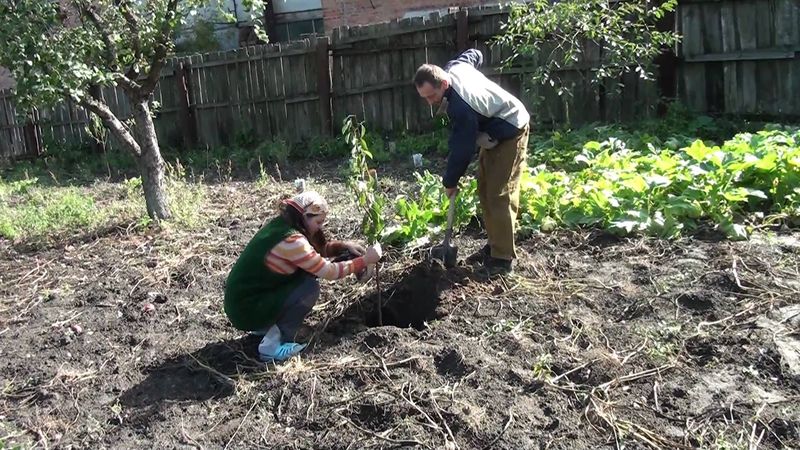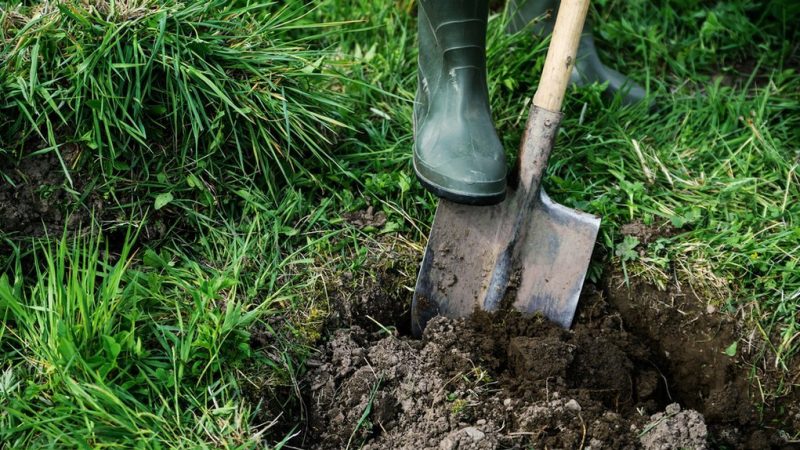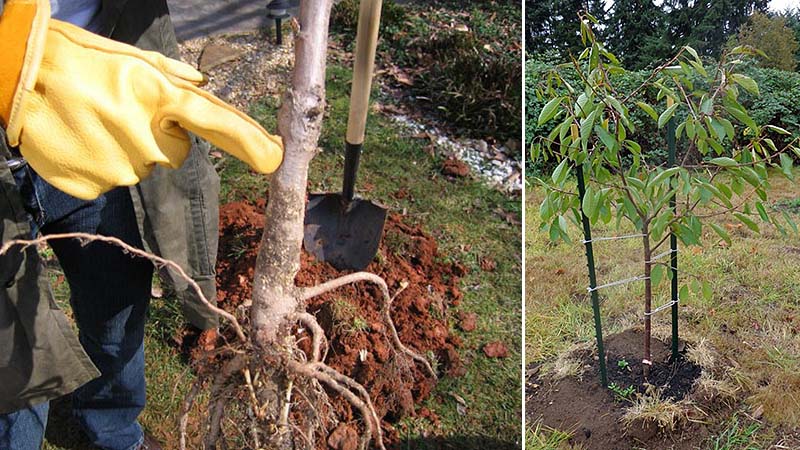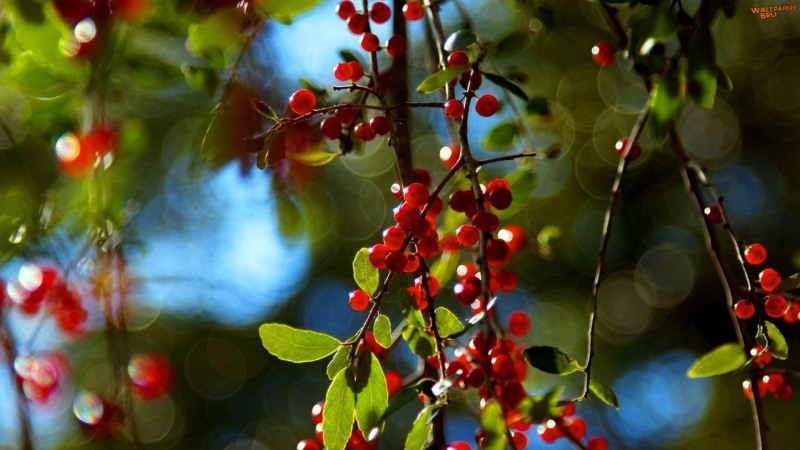A guide on how to plant cherries correctly in the fall and avoid mistakes
Planting cherries in the fall will allow in the future to collect sweet and aromatic berries with excellent varietal characteristics. In addition, such seedlings will be hardened and more resistant to sudden spring frosts. How to properly plant a cherry in autumn? What features of garden culture should be considered? Should you postpone the planting of cherries in the spring?
The content of the article
Choosing a cherry variety for autumn planting
Like any rosaceous, sweet cherry does not tolerate severe frosts. So that a young seedling does not die during the first frosts, varieties that have passed zoning in a particular region are chosen.

Such varieties are optimal for regional planting:
- Central - Valery Chkalov, Iput, Pink Sunset, Bryanochka.
- North-West - Leningradskaya black, Zorka, Teremoshka, Rechitsa.
- Siberia - North, Michurina, In Memory of Astakhov, Fatezh.
- Far East - Sakhalin, Ordynka, Francis, Ariadne.
Selection and preparation of seedlings
The sweetest, juiciest and largest berries are produced by a tree grown by grafting a scion onto the main trunk. It is this planting material that is guaranteed to meet the declared varietal characteristics.
The best are considered one- and two-year-old cherry seedlings grown in special nurseries. When buying cherries for planting, pay attention to:
- The root system. The roots should be well developed, moderately moist, flexible, without visible mechanical damage. On the cut, any of the appendages is creamy.
- The presence of a dominant conductor. If it is not there and the tree consists of a large number of branches of the same thickness, the cherry will grow poorly, bear fruit and quickly run wild.
- Density of the crown. The presence of a large number of strong branches on the main conductor will form a crown of the correct cup-shaped shape in the future. This will increase the quality and quantity of the crop.
- Plant height... One-year-olds reach 60-70 cm, two-year-olds - 95-110 cm.

Before planting, the root system is examined and soaked, dry, damaged processes are removed. The cleaned tree is placed in a bucket with warm water and a growth stimulator of the "Kornevin" type for 1.5-2 hours and planted in the ground.
On a note! When transporting a seedling to the planting site, the roots are wrapped with a wet rag. The tree is transported carefully to keep the fragile root system intact.
Seat selection
The choice of the growing place largely determines the quality of the future harvest.
Cherry of any variety grows in the best way:
- in sunny, illuminated areas with loamy and sandy loam soils;
- in the southern and southwestern places of the summer cottage;
- in places with groundwater occurrence no higher than 1.5 m;
- in the vicinity of cherries, plums, cherries;
- away from walnut, black currant, mountain ash.
In an acidic peat environment, in heavy clay and sandy soils, cherries grow poorly and often die.

Landing dates
Autumn planting of young cherry seedlings is carried out no later than a month before the expected onset of frost. The soil in the pit will have time to sink before freezing, and the tree will remain dormant until spring.
When is it better to plant - in spring or autumn
In the northern regions of the Russian Federation, cherries are planted exclusively in spring. The advantages of the autumn planting of fruit and berry trees in the southern and central regions include:
- the relative cheapness of planting material, since sellers need to sell the goods before the "dead season";
- heavy rainfall, which relieves the gardener of the need for additional watering of trees;
- quick adaptation of the tree to cold weather and no risk of death from a sudden summer drought.
In any case, trees 1-2 years old take root best.
How to plant cherries in the fall

The technology of planting cherries in autumn does not differ from the traditional spring. When planting 2-3 seedlings at the same time, it is recommended to carry out plantation plowing of the site, and then dig holes. This will help the root system of the trees to better adapt to the local soil and grow unhindered in subsequent years.
Attention! Young seedlings are planted at a distance of 4-5 m from each other so that the spreading crown does not crush and clog the tree next door as it grows.
Required materials and tools
To plant cherries in the fall you will need:
- High-quality seedling from the nursery of excellent quality with a developed root system.
- Shovel, bucket, nutritious potting soil.
- Drainage material from expanded clay, gravel, broken brick.
- Support 80 cm long, twine or strip of fabric 2-3 m long.
The prepared pit is covered by a third with a nutrient mixture with the following composition:
- 2 buckets of excavated soil;
- 2 kg of ammonium sulfate;
- 1 bucket of humus;
- 1 kg of potassium chloride;
- 3 kg superphosphate;
- 500 g of wood ash.
Step-by-step instruction
Planting is easy to handle on your own, but working in pairs is guaranteed to keep fragile roots intact.

The algorithm for planting cherries in autumn is simple:
- Arrange a landing pit. The recommended hole size for young cherries is 1 m wide and 80-90 cm deep.
- Insert a support into the center of the pit for the future tree and fix it well.
- Drainage 10-30 cm thick from expanded clay or brick is laid at the bottom. In areas with clay soil, 1-2 buckets of fine river sand are poured onto the bottom of the pit.
- Pour the soil mixture into the center of the hole and form a mound.
- Carefully place the seedling so that the root collar remains above the soil surface at a height of 5-6 cm. Tie it to a support and sprinkle it.
- Pour out a bucket of warm water. Sprinkle the roots with the remaining soil, lightly tamp.
- The tree trunk is finally fixed to the support.
- The soil is compacted with high quality, but neatly.
- A near-trunk circle is formed, mulched with straw, hay, peat.
The more fibrous, juicy and elastic shoots the root system of a cherry seedling has, the faster it will take root in a new place.
Further care of the seedling
A delicate plant requires increased attention in the first year after planting. In winter, the tree is dormant. All that is required of a gardener during this period is protection from hares and sudden frosts. For this, a young plant is tied with sacking and sprinkled with snow to a height of 1.5 m.

With the onset of the first spring heat, agrotechnical measures begin:
- Weed control. Rosaceae categorically do not tolerate the neighborhood with weeds, therefore, the soil in the near-stem circle is thoroughly cleaned of unwanted plants. In the first year after planting, the diameter of the free circle is 1 m, each subsequent year it is expanded by 50 cm.
- Watering. Sweet cherry does not tolerate excessive moisture and sudden drought. In dry years, the plant is watered twice a month. Water consumption for a young seedling is 3-4 buckets. Each subsequent year, the rate is doubled. In rainy years, additional watering is excluded, the trunk circle is regularly mulched with dry material.
- Top dressing. Nutrient compositions under the cherry seedling are introduced through the periosteal circle. The plant is watered once a season with a manure solution at the rate of 1 liter of manure per bucket of water, or 2-3 buckets of humus are added every 3-4 years. In the second year, 110 g of urea is scattered along the near-trunk circle.
- Forming the crown. In the second year of life, the first molding of the future crown is performed. To do this, choose 3-4 strong branches and shorten them. The optimal length of the hemp is 40-45 cm.Small branches are cut off at the conductor. The center conductor is shortened 1 m from the lower tier. During shaping, branches growing inward are removed to form a cupped crown. This will provide good lighting and make harvesting easier.
In the immediate vicinity of the tree, melliferous plants are planted - calendula, common blackhead, mint. This simple exercise will attract bees and increase the pollination rate of each tree by 30-40%.
It is interesting:
Why do you need pruning grapes in the fall and how to carry it out correctly.
How to properly prune an apricot in the fall and why you need it.
Proven ways to keep grapes for the winter at home.
How to properly freeze gooseberries for the winter in the freezer: the best ways.
Landing nuances depending on the region
Further development of the seedling, its immunity and yield directly depend on the timing of planting. In the northern regions of the Russian Federation, cherries are recommended to be planted in spring. In a short summer, the tree manages to take root and adapt to the long frosty winter.
In the southern regions (Rostov region, North Caucasus, Krasnodar Territory), cherries of autumn planting give more juicy, sweet and fragrant fruits.
On a note! Sweet cherry is a cross-pollinated plant. Experienced gardeners advise planting on the site in groups of 2-3 cherry trees of different varieties with a simultaneous flowering period.
Conclusion
With strict adherence to agricultural techniques for planting cherries, a young tree successfully tolerates the first winter, instantly adapts to adverse weather conditions and is able to bear fruit 70-80 years after planting. And this means that the delicious fragrant berry will delight children, grandchildren and great-grandchildren for a long time.